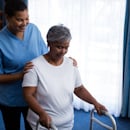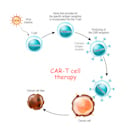
The RAPID Model-Intervention
As we continue our series on Psychological First Aid (PFA), we reach the critical element of Intervention. To review the first four articles please click on the links below
Article 1: Overview of Critical Incident Stress Management (CISM) .
This article is the first in a six-part series that delves deeper into CISM, the RAPID model and Psychological First Aid.
Article 2: The RAPID Model- Rapport
Establishing The following rapport is an essential first part of any relationship; you are trying to build a trusting and helpful relationship with a person who may be experiencing the worst day of their life.
Article 3: The RAPID Model-Assessment
This assessment is derived from a guided conversation that is based on the survivor’s own narrative. It is punctuated with specific questions regarding the details of the event and the survivor’s reactions to the event. This is not a clinical assessment, instead, it is an assessment based on common sense allowing the survivor to tell you what happened and their reactions because of what has happened.
Article 4: The Rapid Model-Prioritization
After listening and assessing the situation, before implementing an assessment, it is important that we prioritize or triage the situation to help the survivors who need the greatest assistance. Prioritization, in this instance, is defined as putting an emphasis on assisting basic functional capacity (Everly, McCabe, Semon, Thompson, & Jonathan, 2014).
Psychological First Aid (PFA) is a compassionate and supportive presence designed to mitigate acute distress and assess the need for continued mental health care. PFA is not therapy, diagnosis, or treatment. John Hopkin’s program has developed an acronym, RAPID, to help guide you through PFA as well as self-care.. RAPID:
- Rapport/Reflective/Active Listening
- Assessment
- Prioritization
- Intervention
- Disposition
- (Everly, McCabe, Semon, Thompson, & Jonathan, 2014)
As members of the healthcare profession, we know that the process of helping others, especially in times of pandemics, and disasters (natural or manmade) take a toll on each of us. Using a standardized process to help others in psychological stress will help the person in need and using a self-care model will help ensure we have the stamina, and psychological and physical stability to help those in need. This seven-part series will discuss each segment of the acronym RAPID as well as self-care.
Part 4: Intervention
Intervention is not fixing the survivor’s problem; it is offering them first-aid. Remember physiological first aid is a compassionate and supportive presence, not therapy (Everly, McCabe, Semon, Thompson, & Jonathan, 2014).
The goal of intervention is to attend to basic needs, mitigate acute psychological distress and if possible, restore acute functional capacity. Attending to basic medical and physical needs is your first step. Once these needs have been met, you can move forward with mitigating psychological distress.
One way to mitigate acute psychological distress is to listen. How many times have you called someone to vent about a problem? When you hang up usually you have not solved anything, but you feel better. In a disaster, listening can be the intervention the survivor needs. Obtaining social support, one of the easiest interventions, can reduce the risk of posttraumatic stress and encourage resiliency.
Here are Some Tools to Help Survivors:
- Explanatory guidance is education about the who, what, why, and when of the disaster
- Reassurance is the installation of hope, one of the most powerful things you can do
- Anticipatory guidance is education about what to expect, such as
- Don’t expect to sleep as you did before
- You may not want to be around people like before
- Correct misunderstandings or false information by reframing or rephrasing the statement
Reframing is a natural phenomenon, related to optimism, and happier, healthier people (Everly, McCabe, Semon, Thompson, & Jonathan, 2014)
Stabilize and mitigate are the operational terms used in the intervention. Remember you cannot fix a person’s problems; you can assist them, get resources, and support them. There will be survivors that have persistent distress or persistent dysfunction that interferes with their ability to move forward. These people who cannot take care of themselves or their dependent others need more help than you can give at this time (Everly, McCabe, Semon, Thompson, & Jonathan, 2014).
In summary, your job is to stabilize and mitigate the circumstances that you can and find resources for those you cannot.
The next article in the series is Disposition. Each step of the acronym RAPID is essential so be sure to read each of the seven articles.
References
Everly, G.S., McCabe, L.O., Semon, N.L., Thompson, C.B, Jonathan, L. (2014). The Development of a Model of Psychological First Aid for Non–Mental Health Trained Public Health Personnel; The Johns Hopkins RAPID-PFA.




